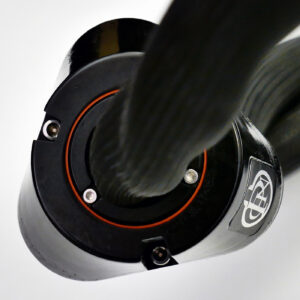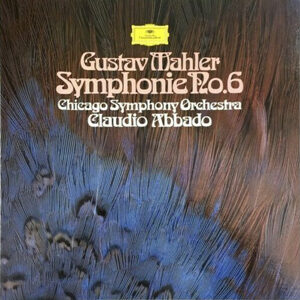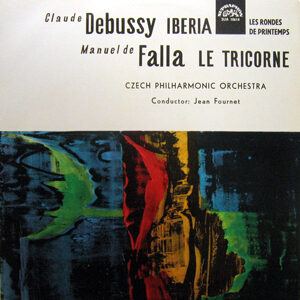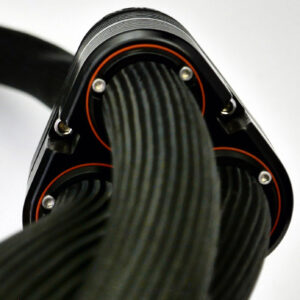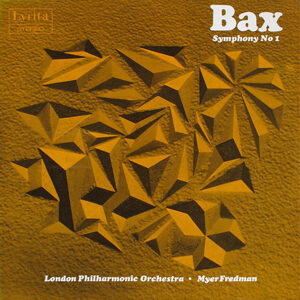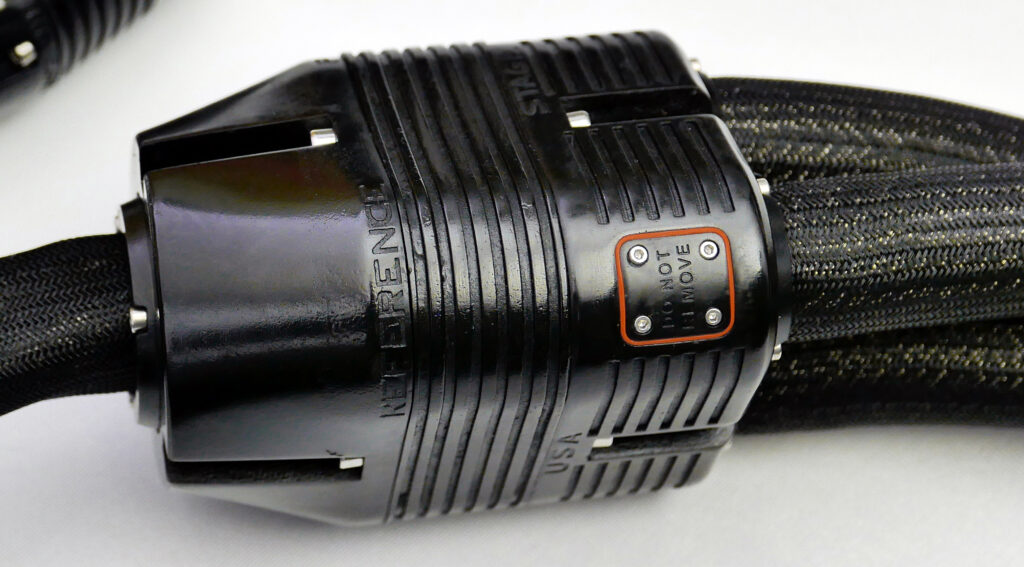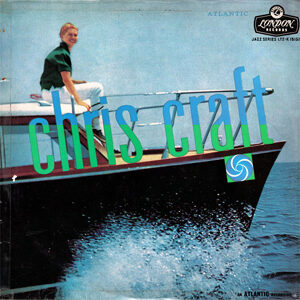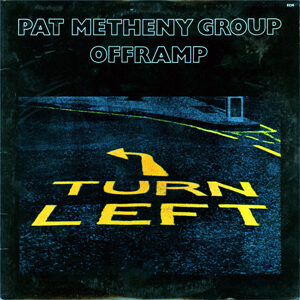Mahler, Symphonie No. 6, Chicago Symphony Orchestra, Claudio Abbado, DGG2707117.
This Mahler’s 6th was an analog entry into Abbado’s first cycle on DGG, part digital, part analog. There seems to be some level of disdain for DGG recordings among some audiophiles, as compared to, say, Decca. DG can be spotty; however, this recording was not, in my view, one of the spotty ones. The Chicago Symphony was in inspired form and sounded it. And through whatever combination of magic it involved, including the Poseidon, I felt that I could hear everything I could hope for. In particular, the bass was terrific, down to the scraping of the bows and the vibrating of the long bass strings.
The soundstage as a whole was exceptional. To the rear, slightly left of center, was the snare drum. I had no particular memory of having in the past noticed the soft rolls that emanate from that corner at certain moments, but their “real-ness” fully captured my attention, and made me wonder how I had missed the effect in the past. Similarly, later, the cowbells.
If I had any complaints, it was the violins. They seemed just a bit hard when pressed. I interpreted that as being an unfortunate artifact of a transistor recording from the late 70s; I’ve certainly heard it before and it does not distract much from the main thrust of the music. But it must be noted. Nevertheless, I must say that, in the end, the overall effect was just about as close to concert hall listening as we are likely to get, to my ears, short of the real thing. Not perfect, but a damn good illusion.
Debussy, Iberia, Falla, Le Tricorne, Czech Philharmonic Orchestra, Supraphon SUA ST 50614.
I learned recently about “red” Supraphons, referring to the label on the record, which, in this case comes from 1966. According to my source, this Czech label came into possession of high-quality tube gear from Western European countries, and quickly learned how to use it well. This particular recording was one of my (largely) happy experiments with a 60s Supraphon. While the sound was not quite in the same category as one of the great 60s Deccas, it was darn good. I wish the vinyl had been as well, and it was not bad, but not exactly virgin-class sounding.
The system as a whole presented the recording in its best light, a characteristic I found myself increasingly appreciating as I noted it over time. I did not so much get lost in the rhythmic pulse as I did in the orchestral color. The Czech Philharmonic, though not much known in the West at the time, I think, was a fully competitive orchestra. The recording spread the orchestra out in front of me in a realistic way, with some back-to-front imaging as well, though not as sharp as with some other recordings. Again, though, the color of the orchestra was especially convincing. The winds sounded like winds — like individual instruments contributing to the whole.
Similarly, the different string voices were fully evident and clearly delineated as full-bodied groups with voices of their own. Indeed, the variations of string tone provided one of the listening highlights. The only (and slight) negative was in the edges of the first violins. At times, meaning particularly when pressed, they were not as listener friendly as I would have hoped. Again, how much of this was the Ortofon and how much was the Poseidon was difficult to know for sure, although I tend to give the benefit of the doubt to the Poseidon.
Bax, Symphony No. 1, London Philharmonic Orchestra, Lyrita SRCS 53.
This Lyrita I know pretty well. Decca mastered and pressed it and they did a great job. The soundstage is excellent, both side-to-side and front-to-back. On the wrong equipment, the upper strings can sound on the glassy side. This evening, they did not. In fact, they blended very well with the rest of the strings to make for a rich whole.
I have several copies of this record, and all of them have a bit of surface noise, that being more or less noticeable depending upon the playback gear. I can say that one of the mild annoyances I had with the Ortofon — and the Poseidon changed nothing in this regard — is that the Ortofon has been more on the “honest-to-a-fault” side of presenting surface noise to the listener. After years of listening, one would think that I might fully understand the diagnostics of that issue: enhanced upper frequency response; stylus shape; etc. But I don’t, not completely, although I think those are factors. I’m not convinced that we have to give up the incredibly detailed performance of the Ortofon or the Poseidon, to the extent that the latter may be involved, in order to reduce awareness of surface noise, but I’m not sure. And, as outlined in the discussion of Chris Craft hereinbelow, there were some records on which surface noise issues seemed less annoying, an anomaly I have yet to fully understand.
Szymanowski, Violin Konzerte NR. 1 & 2, EMI 1C065-03 597.
This is a late pressing by German EMI of this terrific and insufficiently known concerto. German EMI records do not tend to have the same cachet among vinyl aficionados as UK EMI. This LP could make one wonder why. The atmospherics are marvelous, which is what you want with this early 20th Century, heavily perfumed, mildly hallucinatory showpiece. If not as neurotic as the Berg Concerto, it gives up nothing in terms of moody color. Rather like the Chagall of the floating violinist in the night.
There are many moments of alternating tension and relaxation — Szymanowski did not want to let the listeners go. The system did a beautiful job of allowing the moments to come and capturing their brief intensity, then shifting suddenly in mood. I hadn’t noticed how effectively the composer carried the listener along in this fashion until this evening. Credit is due, too, to the performers, who had the music in their blood.
The imaging on this recording was somewhat underwhelming. The violin was well-centered, but the orchestra was less so. It is a credit to the system that the positives of the recording outweighed the negatives. In this case also, the upper strings displayed no particular edge. The music really came across for a most fulfilling listen. Hard to ask for more.
Chris Craft, Chris Connor, London LTZ-K 15151 Jazz Series.
Checking out the U.K. pressing of this gem was an experiment; the lure of a Decca pressing versus an early 60s Atlantic pressing was irresistible.
Chris’s voice sounded as alive and sensuous as the moment — I was prepared to wipe the lipstick off my lapel, and sorry it turned out to be only a dream. And once again, here was a mono LP that had depth and even width. The detail of the ride cymbal and brushes was beyond reproach. Great guitar, clean and clear upright bass.
How much was better because of the Poseidon? We’ve all seen the following description before, but what can I say? It did a great job of getting completely out of the way, and maybe one thing better: This record was not in perfect condition. For heaven’s sakes, it‘s almost 60 years old and has travelled all over the world. The Poseidon did not rub the glitches into my ears. Everything was there and nothing hurt. I could just concentrate on the impeccable singing and playing from more than a generation ago.
Pat Metheny Group, Offramp, ECM-1-1216.
I hadn’t heard this in a year, maybe two. It’s such a great record that when I play it once, I end up playing it almost to death thereafter and have to put it out to pasture for a while. I got to where I used to skip the first tune, a short one. I listened to it again this evening, for the first time in a very long while. The sound alone was so terrific I cannot fathom why I was skipping it. Except that now, maybe the sound was that much better . . . enough so that something that might not otherwise appeal, does now.
The remainder of Side 1 was so excellent in sound and music that I didn’t want to write. What Metheny and Mays and their group were doing with this music in that time broke many boundaries and was immensely satisfying musically. Particularly bringing in the Brazilian element, or was it the Synclavier? And the richness of the sound environment . . . engulfing.
All I can really say about the Poseidon is that I’ve never heard as much of this record as I’ve heard tonight. Full bodied mids, deep bass, complete treble, with an extraordinary soundstage. I was in the music. I guess something will come along at some point that will cause me to think, “this is better,” but right now, I just don’t need anymore.
- ← Previous page
- (Page 2 of 3)
- Next page →

